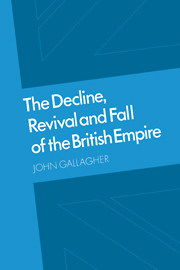Congress in Decline: Bengal, 1930 to 1939
Published online by Cambridge University Press: 28 August 2009
Summary
During the twenty years after the First World War, Indian politics were moulded by two main forces, each of which drew strength from the other. Important constitutional changes devolved a range of powers to Indians. But the British did not plan these reforms of 1919 and 1935 as stages by which they would quit India, bag and baggage, but rather as adjustments in the methods of keeping their Indian connection while retaining intact most of its fundamental advantages. At the centre of government in India, the powers of the Raj were increased; in the provinces more and more authority was entrusted to Indians. This system canalized much of Indian political action into the provinces. Moreover, by placing the new provincial administrations upon greatly widened electorates, it gave the Raj a further range of collaborators, selected now for their mastery of vote-gathering. The reforms of 1919 provoked another seminal development. By widening the functions of local government bodies in municipalities and the rural areas, which were to be chosen by the same voters who elected the new provincial councils, they linked the politics of the localities more closely to the politics of the province.
The second main development arose out of these changes, since constitutional initiatives by the British prompted political responses by the Indians, cooperators or non-cooperators alike. Whether they chose to work the reforms or preferred to press for further concessions, the politicians in nearly all provinces of India had to take account of the new electoral system.
- Type
- Chapter
- Information
- The Decline, Revival and Fall of the British EmpireThe Ford Lectures and Other Essays, pp. 155 - 211Publisher: Cambridge University PressPrint publication year: 1982

